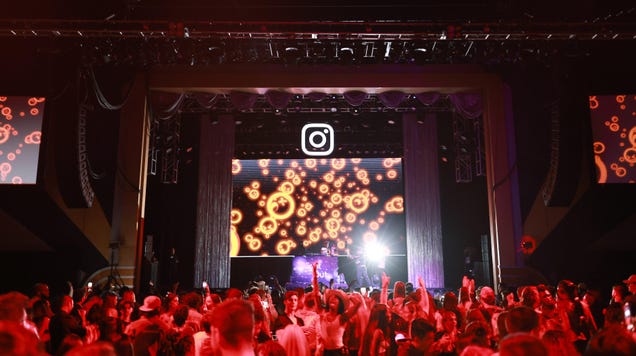Just how much copyright protection should an artist or photographer expect after they post their work on social media? It’s a murky legal question by itself that’s now made even murkier as an appeals court digs directly into the nature of HTML to say that—no—that embedded photo isn’t a copy of the original photo, but a link to where it’s stored.
On Tuesday, the 9th Circuit Federal Appeals Court in northern California laid out the case that sharing embedded images and enabling the sharing of embedded images isn’t necessarily copyright infringement. Rather, they’re just HTML code that makes the browser display the hosted image, rather than a direct copy of the content.
The case stretches back several years when photographers Alexis Hunley and Matthew Brauer filed a class action lawsuit in federal court back in 2021. The pair alleged Instagram abused their copyright by allowing news outlets to embed the photos they themselves posted to their accounts. Lawyers for the photographers argued that Instagram never asked third parties to obtain a license to embed copyrighted work. Further, they argued Instagram was misleading third parties that it was A-OK to embed copyrighted materials posted by the original creator.
The original complaint cites two instances where outside news outlets embedded the photos from the photographers’ Instagrams. Buzzfeed News published a photo from a 2020 Black Lives Matter protest taken by Hunley. Back in 2016, Time published a story about photographers covering the 2016 election on Instagram, embedding a photo of then-candidate Hillary Clinton taken by Brauer.
California Judge Charles Breyer agreed with Instagram’s request to dismiss the suit in February of 2022, saying that the news outlets weren’t actually displaying any “copies” of the photos. The photographers appealed, leading to the appeals court’s decision that displaying an embed link does not actually show a copy of the images. The 9th circuit claimed that the photos were still stored on Instagram servers, rather than on third-party systems.
In the decision document, the usually old-fashioned appeals court digs directly into the nature of HTML embeds. The hypertext code doesn’t actually contain the images but—in simple terms—an address for where the photos are stored while allowing the embed to display the file. The browser follows the HTML instructions handled through the embed link.
“The embedding website does not store a copy of the underlying image. Rather, embedding allows multiple websites to incorporate content stored on a single server simultaneously,” the decision reads.
The decision also depends largely on the previous decision handed down in Perfect 10 v. Amazon back in 2007. The publisher of nude images claimed Amazon and Google had broken its copyright when it displayed thumbnail images, but the court claimed that the images were not actually hosted on Google’s servers.
What makes this all the more confusing is a New York federal judge handed down a contradictory ruling back in 2018. The case centered around several outlets including The Boston Globe, Time, and even hate hype train Breitbart who used an embedded photo of Tom Brady in separate stories. Photographer Justin Goldman uploaded a photo of the now-off-the-field quarterback to his Snapchat account, which other users then uploaded to Twitter. The news organizations then embedded tweets that included that image.
In that case, Goldman sued the outlets, rather than Snapchat or Twitter. New York Judge Katherine Forrest said in her decision that “the fact that the image was hosted on a server owned and operated by an unrelated third party does not shield them from this result.” Forrest also referenced Perfect 10 v. Amazon, though she claimed that since the server test was only adopted by the California appeals court, she wasn’t going to apply it to the Brady photo case.
This discrepancy does leave enough wiggle room for varying interpretations of the law, and it could set up a larger court battle somewhere down the road. Gizmodo reached out to the photographers’ attorneys to hear if they plan for any more appeals, but we have not yet heard back.
It’s not like there’s a dearth of tech-related questions making their way through the courts. The U.S. Supreme Court just got done deciding not to touch big tech’s biggest liability shield with Section 230, but there are several big “anti-censorship” laws from Texas and Florida that the Supreme Court could also potentially screw social media on. SCOTUS could hear arguments on that case as soon as October, and have a decision by early 2024.
